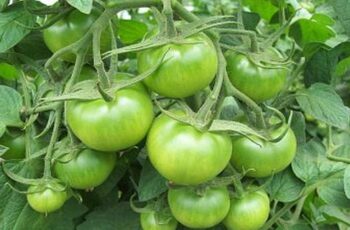Ad Blocker Detected
Our website is made possible by displaying online advertisements to our visitors. Please consider supporting us by disabling your ad blocker.
11. Asters (Aster spp.)
| Plant name: | Asters |
| Light requirements: | Full sun to part shade |
| Water requirements: | Moderate |
| Growing zone: | Zones 3 to 8 |
Asters are the stars of autumn gardens, and they produce an eye-catching display of pink, blue, purple, and white flowers long after most summertime plants fade. There are about 350 different types of asters in the world, and about half of those aster varieties are native to North America. While you can find different aster cultivars for your garden, New England asters are a particularly showy variety, and they’re always a hit with native bees.
Different varieties of asters can grow to different heights, but these plants generally range in size from 1 to 6’ tall. Larger aster varieties are ideal for planting towards the back of gardens, but they also look impressive when grown en masse with other autumn favorites, like goldenrods. Asters can be planted throughout the growing season, but for fall plantings, aim to get your asters planted at least 4 weeks before frost is expected.
12. Black-eyed Susan (Rudbeckia hirta)
| Plant name: | Black-eyed Susan |
| Light requirements: | Full sun to part shade |
| Water requirements: | Moderate |
| Growing zone: | Zones 3 to 10 |
Black-eyed Susan is one of the most easy-to-grow perennials that you can find. With sunny yellow petals and an equally sunny disposition, black-eyed Susans can thrive in a range of conditions, and these plants naturally self-sow if you don’t deadhead the spent blooms. But to get your black-eyed Susan patch started, you’ll want to sow nursery starts or seeds in spring or early fall.
While black-eyed Susans make a colorful addition to ornamental beds, they are excellent pollinator plants, and their seedheads provide an important food source for birds in autumn. You can also use black-eyed Susans in cut flower arrangements or brew the flowers to make a homemade natural dye. For a charming and low-maintenance wildflower display, try pairing black-eyed Susan with yarrow and coneflowers.
13. Astilbe (Astilbe chinensis)
| Plant name: | Astilbe |
| Light requirements: | Full sun to part shade |
| Water requirements: | Moderate |
| Growing zone: | Zones 4 to 9 |
Also known as false goat’s beard, astilbe plants add interesting texture to garden landscapes with their sprays of upright, foamy flowers. Astilbe blooms come in pinks, purples, and white, and they make a fine complement to the plant’s dense and jagged leaves. When allowed to grow and spread, astilbe plants make an easygoing groundcover, but they can also be used as border plants or added to mixed ornamental beds.
Planting astilbe in the fall, several weeks before frost is expected, will give you a jump start on the growing season ahead, although you can also sow astilbe in spring. Full-grown plants grow about 1 to 3’ tall, and they spread over 30” wide. While astilbe will grow in the sun, these plants also thrive in part shade along with other shade-loving perennials, like hellebores, ferns, and lily of the valley.
14. Shasta daisies (Leucanthemum × superbum)
| Plant name: | Shasta daisies |
| Light requirements: | Full sun to part shade |
| Water requirements: | Moderate |
| Growing zone: | Zones 5 to 9 |
Shasta daisies were first developed in the 1800s by crossing oxeye daisies with several other daisy species. The resulting plant was named “Shasta” after the snowy, white peaks of Mount Shasta in California. Beyond their distinct flowers, Shasta daisies are also noteworthy for their dark green, leathery leaves, which can stay evergreen in mild climates.
Typically, Shasta daisies are planted in spring, but they’ll do well with an autumn planting as long as you get them in the ground in early fall. Daisy plants that are sown too late in the year may not have enough time to develop roots before frost, and they can struggle to get established. In the garden, Shasta daisies will attract a host of pollinators, including butterflies, and these plants also make attractive cut flowers.
15. Pasque flower (Pulsatilla patens)
| Plant name: | Pasque flower |
| Light requirements: | Full sun |
| Water requirements: | Moderate |
| Growing zone: | Zones 4 to 8 |
A low-growing, clump-forming perennial plant, the Pasque flower is an early spring bloomer that provides nectar and pollen for bees before other plants emerge from their winter hibernation. After the long winter, it’s always exciting to see Pasque flowers bloom, which usually occurs around Eastertime. The plant’s name “Pasque” actually comes from its bloom time, as “Pasque” is the Old French word for Easter.
Pasque flowers are usually grown from bulbs, which can be planted in autumn, just like daffodils and tulips. As they mature, Pasque flowers naturally spread, but they only grow to about 12” tall. After their purple blooms fade, Pasque flowers usually go dormant in summer, but they regrow reliably even in areas as cool as Zone 4.
16. Spotted dead nettle (Lamium maculatum)
| Plant name: | Spotted dead nettle |
| Light requirements: | Shade |
| Water requirements: | Moderate |
| Growing zone: | Zones 3 to 8 |
Spotted dead nettle is a no-nonsense groundcover that can grow in shady spots where most other plants won’t take root. This fast-growing plant is a relative of mint, and like mint, it can grow aggressively in some areas. In fact, spotted dead nettle is listed as invasive in some spots, so you’ll want to take care when growing it.
In the garden, spotted dead nettle provides a lot of color from its purple flowers and deep green leaves that are accented with silvery spots. A magnet for bees, dead nettle gets its name from the fact that its leaves are stinger-free, unlike the notorious stinging nettle. Dead nettle plants will take off whether they’re planted in spring or fall, and the edible leaves can even be used as a culinary herb!
17. Cushion spurge (Euphorbia epithymoides)
| Plant name: | Cushion spurge |
| Light requirements: | Full sun to part shade |
| Water requirements: | Moderate |
| Growing zone: | Zones 3 to 10 |
Cushion spurge is one of the flashiest border plants you can find, but it also looks at home in mixed beds and cottage gardens. This vibrant plant has modified leaf structures, known as bracts, which are a buttery yellow color that’s certain to draw the eye. Plants with colorful bracts are less commonly seen in gardens, but the poinsettia plant is another good example of a plant with colorful bract structures.
When planted in gardens, cushion spurge will develop an upright, mounding growth habit, which can be used to accentuate other perennial favorites, like Virginia bluebells and yarrow. This plant is native to the Middle East, but it can adapt to cooler areas, and it’s even deer and rabbit-resistant. Loosen up your soil and mix compost into the top 12” of earth before planting your cushion spurge in the fall.
19. Butterfly bush (Buddleja davidii)
| Plant name: | Butterfly bush |
| Light requirements: | Full sun |
| Water requirements: | Moderate |
| Growing zone: | Zones 5 to 10 |
One of the absolute best plants to grow if you want to attract hummingbirds and butterflies to your garden, butterfly bushes are bold plants with long, clustered flowers in shades of purple, pink, and white. When they bloom from mid-summer to early fall, these plants emit a heady, honey-like fragrance that can make your head swim, and your garden feel like paradise. Plus, these plants are adaptable, and they can grow in average soil types, although they do crave lots of bright sun.
Mature butterfly bushes usually grow about 5 to 10’ tall, but you can also find dwarf cultivars that stay under 4’ in height. Beyond their colorful flowers, butterfly bushes also feature silvery-green leaves that can add an interesting contrast to garden beds. Plant butterfly bushes in spring or early fall to give these plants enough time to root before frost sets in.
Summary
Planting perennials in autumn is always a hopeful experience that can make you look forward to the growing season ahead. Even as your garden is winding down for the year, fall-planted perennials promise springs and summers to come, as well as rich flowers all abuzz with bees. Beyond that, fall is also a great time to reflect on the past growing season and adapt your garden to your changing interests by adding new plants for extra color and extended bloom times.
Growing perennial plants that bloom at different times of the year is one of the best ways to keep your garden colorful throughout the changing seasons.

